California is known as the Golden State, and it’s where you can say “Eureka” as much as you want! It is found in the western part of the US and features a beautiful Pacific Ocean coastline. California is the most populous state in the United States.
The state has six biomes that enhance its diversity of terrain and climate. As a result, many species of animals and plants reside here. But what about those animals that don’t live here anymore – that went extinct? That’s exactly what we’re going to tackle in this article.
Let’s discover 7 extinct animals that lived in California!
1. Dire Wolf
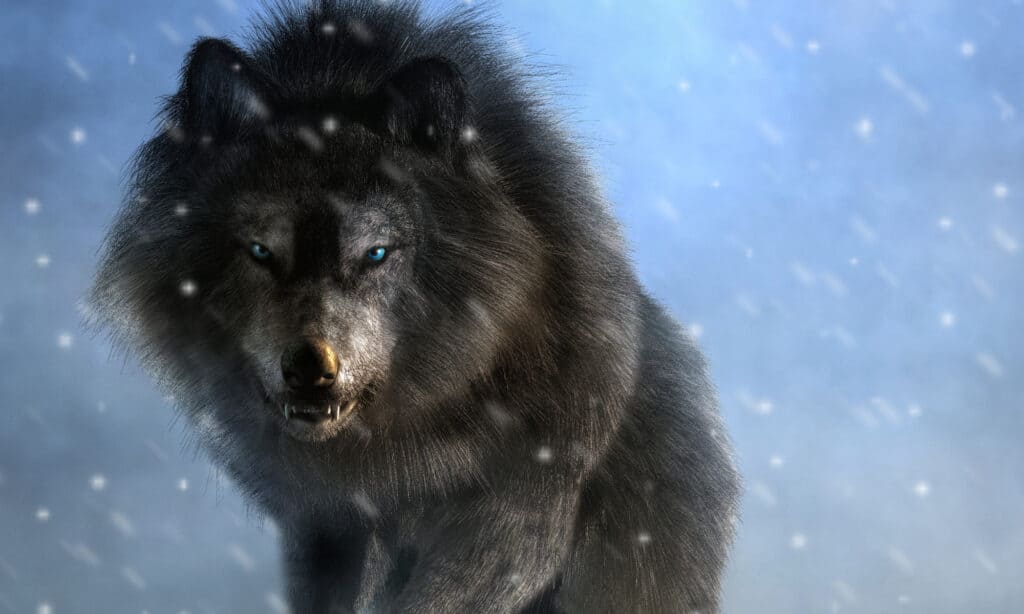
The average dire wolf weighed between 132 and 150 lbs.
©Daniel Eskridge/Shutterstock.com
| Dire wolf | |
|---|---|
| Kingdom | Animalia |
| Phylum | Chordata |
| Class | Mammalia |
| Order | Carnivora |
| Family | Canidae |
| Subfamily | Caninae |
| Tribe | Canini |
| Subtribe | Canina |
| Genus | Aenocyon |
| Species | Aenocyon dirus |
| Extinct since | 9,500 years ago |
During the Cenozoic period, animals such as the dire wolf and saber-tooth cat inhabited the territory of California. Aenocyon dirus, the dire wolf, is a species of canine that went extinct about 9,500 years ago, during the Early Holocene period. The species is known for its ability to adapt to new climates. Dire wolf fossils were found in mountain areas, plains, savannas, grasslands, and steppes.
Depending on the subspecies, the average dire wolf weighed between 132 and 150 lbs. (60-68 kg). Dire wolves had the strongest bite of any Canis species member, thanks to their larger and sharper teeth. For example, this animal is known to have hunted ground sloths, ancient bison, and even mastodons.
The main reason for the extinction of the dire wolf was the extinction of their prey. Since dire wolves hunted only large prey, the extinction of mastodons and ground sloths, among many others, led to theirs as well.
2. Saber-toothed Cat
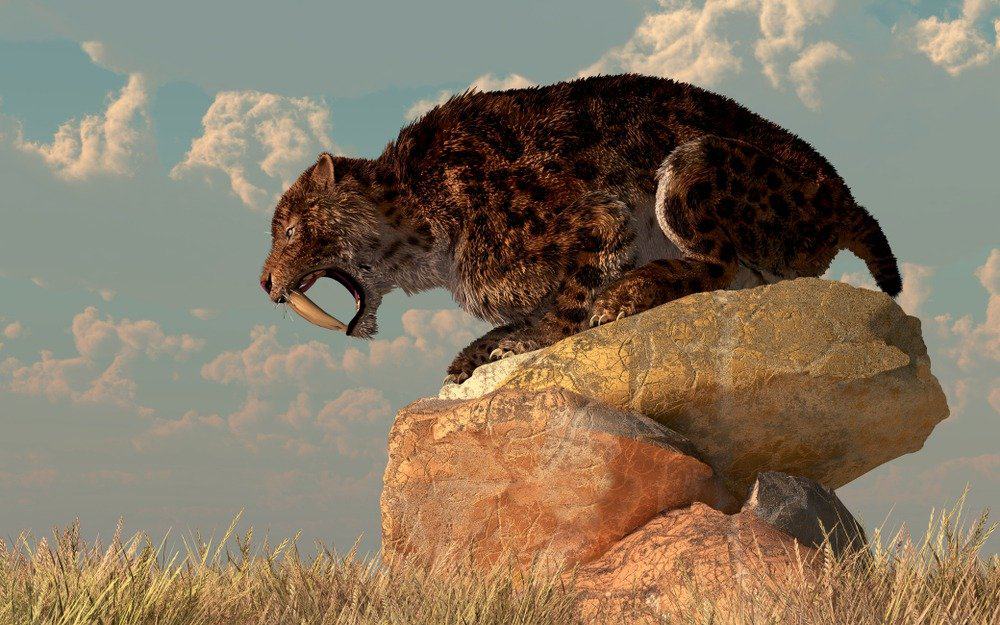
A saber-toothed cat is any member of the
Machairodontinaesubfamily.
©Daniel Eskridge/Shutterstock.com
| Saber-toothed cat | |
|---|---|
| Kingdom | Animalia |
| Phylum | Chordata |
| Class | Mammalia |
| Order | Carnivora |
| Suborder | Feliformia |
| Family | Felidae |
| Subfamily | Machairodontinae |
| Extinct since | 11,000 years ago |
A saber-toothed cat is any member of the Machairodontinae subfamily. This subfamily is part of the Felidae family, also known as the true cat family. The aforementioned subfamily, as well as saber-toothed cats, became extinct around 11,000 years ago.
The state fossil of California is Smilodon fatalis, a saber-toothed cat species that lived during the Pleistocene period.
The saber-toothed cat is known, obviously, for its saber-shaped teeth. Smilodon fatalis, however, had dirk-shaped teeth. This species coexisted with the American lion, cougar, jaguar, and American cheetah. The Saber-toothed cats that inhabited Eurasia and Africa coexisted and also competed with cheetahs and other species of pantherines.
3. Oreodonts
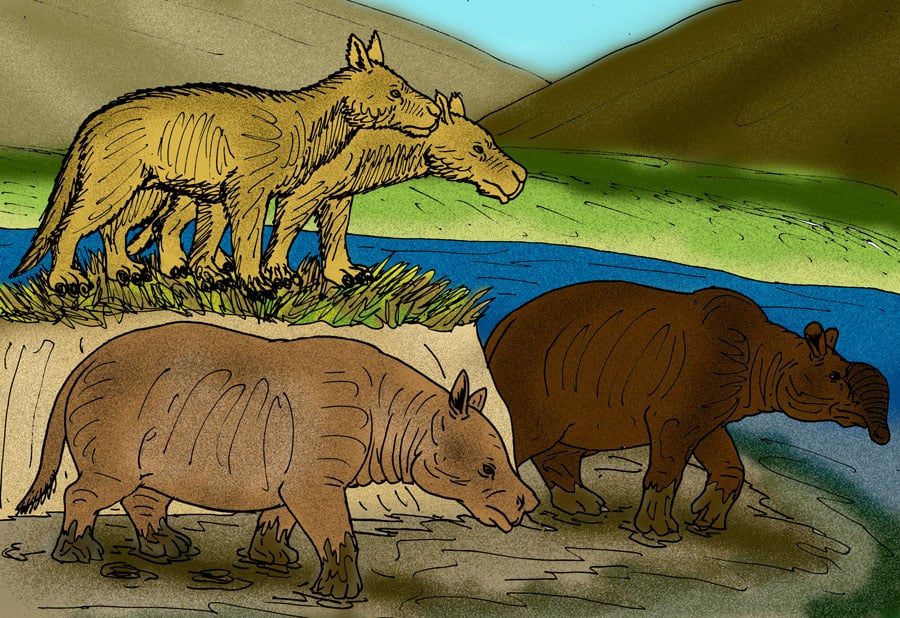
Oreodonts are artiodactyls that went extinct around 5 million years ago.
©Apokryltaros at English Wikipedia / CC BY 3.0 – License
| Oreodonts | |
|---|---|
| Kingdom | Animalia |
| Phylum | Chordata |
| Class | Mammalia |
| Order | Artiodactyla |
| Suborder | Tylopoda |
| Superfamily | Merycoidodontoidea |
| Extinct since | 5 million years ago |
Oreodonts were interesting animals, to say the least. They are also known as ruminating hogs, and are artiodactyls that went extinct around 5 million years ago. Even though they are named hogs, it was discovered that they are closely related to modern camels. Some notable characteristics are their short faces and canine teeth that resemble fangs.
This species usually grew to the size of a modern sheep or, in some cases, to the size of cattle. They had hooves, long tails, and were heavy-bodied.
A large number of oreodont fossils were discovered in Chula Vista, California. The fossils suggest that these animals lived and traveled in large herds. Since oreodonts are essentially a superfamily, species and subspecies adapted to various living conditions. Some oreodonts evolved into semiaquatic animals, trunked browsers, different types of grazers, and desert herbivores.
4. Mastodons
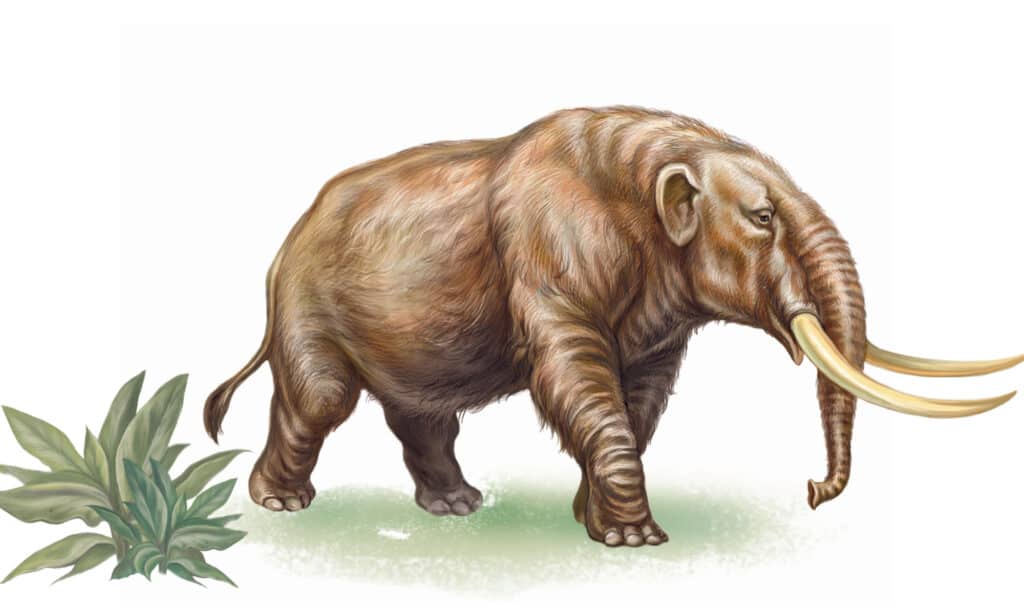
Mastodons were hunted actively by saber-toothed cats.
©Liliya Butenko/Shutterstock.com
| Mastodonts | |
|---|---|
| Kingdom | Animalia |
| Phylum | Chordata |
| Class | Mammalia |
| Order | Proboscidea |
| Family | Mammutidae |
| Genus | Mammut |
| Extinct since | 11,000 years ago |
Mastodon is the name given to the animal, part of the Mammutidae family. The family and its species went extinct about 11,000 years ago, at the start of the Holocene period. Fossils attributed to this extinct family were found all over the world, predominantly in Africa, North America, and Eurasia.
There are six genera of Mammutidae: Eozygodon, Losodokodon, Miomastodon, Sinomammut, Zygolophodon, and Mammut. The latter is the best known of them all. Mastodons were hunted actively by saber-toothed cats. As mentioned earlier, the extinction of the Mammutidae family and other large animals led to the extinction of saber-toothed cats and similar predators.
5. Aletopelta
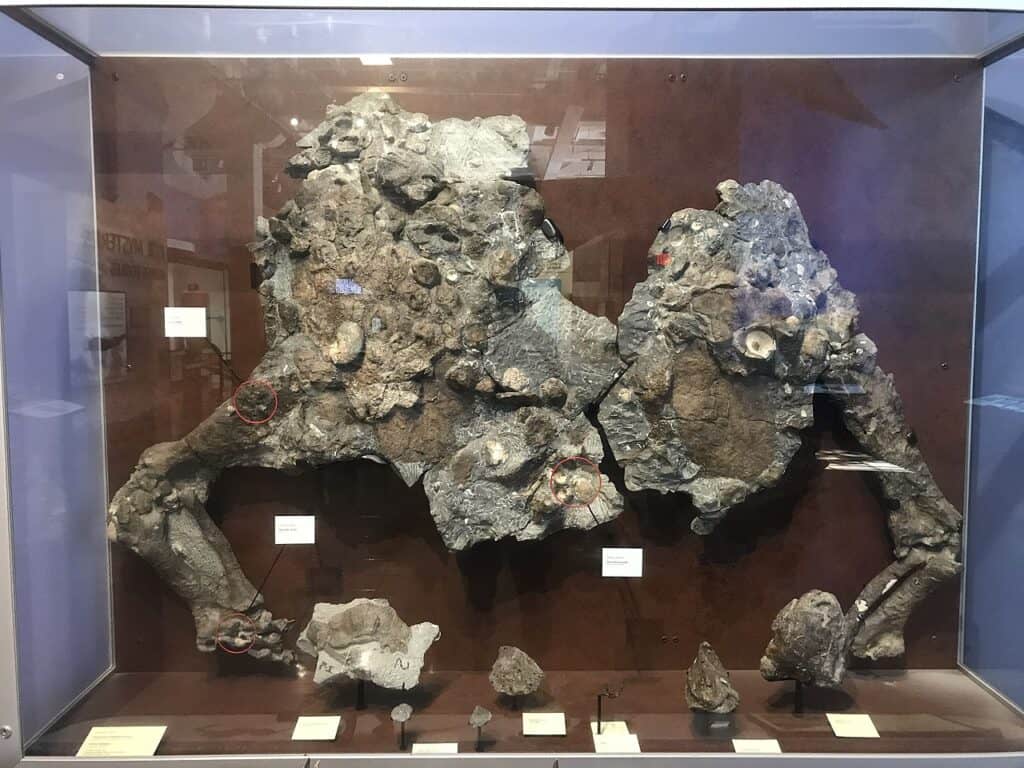
Aletopelta had an average length of 16-19.7 feet.
©ケラトプスユウタ / CC BY-SA 4.0 – License
| Aletopelta | |
|---|---|
| Kingdom | Animalia |
| Phylum | Chordata |
| Clade | Dinosauria |
| Order | Ornithischia |
| Clade | Thyreophora |
| Suborder | Ankylosauria |
| Clade | Euankylosauria |
| Family | Ankylosauridae |
| Genus | Aletopelta |
| Species | Aletopelta coombsi |
| Extinct since | 75.5 million years ago |
Aletopelta was an ankylosaurid dinosaur that lived in California’s territory during the Late Cretaceous period. Fossils of this genus were found in the Point Loma Formation in Southern California. The animal went extinct around 75.5 million years ago.
This dinosaur was not taller than a modern human. It was, however, long and heavy. Aletopelta had an average length of 16-19.7 feet (5-6 m) and weighed around 4,409 lbs (2 t). Being an ankylosaurid, Aletopelta possessed armored skin. In fact, its name can be translated into “wanderer shield.”
6. Augustynolophus

Augustynolophus was a herbivorous hadrosaur.
©Nobu Tamura email:[email protected] http://spinops.blogspot.com / CC BY-SA 4.0 – License
| Augustynolophus | |
|---|---|
| Kingdom | Animalia |
| Phylum | Chordata |
| Clade | Dinosauria |
| Order | Ornithischia |
| Clade | Ornithopoda |
| Family | Hadrosauridae |
| Subfamily | Saurolophinae |
| Genus | Augustynolophus |
| Species | Augustynolophus morrisi |
| Extinct since | 66 million years ago |
Augustynolophus was a saurolophine hadrosaur – a non-crested, duck-billed dinosaur. This animal was a herbivorous hadrosaur that went extinct about 66 million years ago during the Cretaceous-Paleogene extinction event. It was first discovered in California, in the Moreno Formation.
It was taller and larger than the average modern human. However, it posed no threat to other dinosaur species, as Augustynolophus was herbivorous. The dinosaur is one of the few dinosaur species that chewed its food. It had a diet consisting mainly of plant life.
Augustynolophus is the official state dinosaur of California.
7. California Grizzly Bear
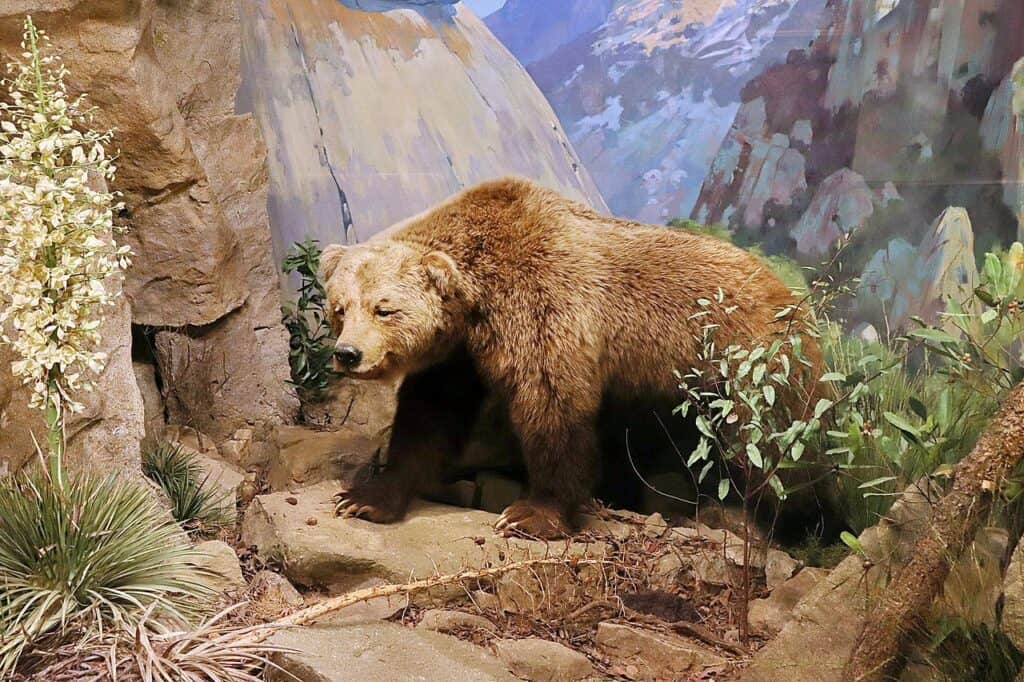
California grizzly bears went extinct in 1924.
©Vahe Martirosyan / CC BY-SA 2.0 – License
| California grizzly bear | |
|---|---|
| Kingdom | Animalia |
| Phylum | Chordata |
| Class | Mammalia |
| Order | Carnivora |
| Family | Ursidae |
| Genus | Ursus |
| Species | Ursus arctos |
| Subspecies | Ursus arctos californicus |
| Extinct since | 1924 |
Ursus arctos californicus, better known as the California grizzly bear or the grizzly bear, went extinct in 1924. It is believed that about 200 years earlier, in the 1700s, California had a grizzly bear population of about 10,000 specimens. Their numbers decreased significantly after the Spanish settlement.
The diet of the California grizzly bear consisted mainly of salmon, deer, acorns, grasses, and berries, despite the animal’s size and strength.
This now-extinct animal is important to the history of California, as it now stands on the state’s flag. The Californian grizzly bear is a permanent part of the state’s seal.
Summary Of The 7 Extinct Animals That Lived In California
| Rank | Animal | Living Period |
|---|---|---|
| 1 | Dire Wolf | 9,500 years ago |
| 2 | Saber-toothed Cat | 11,000 years ago |
| 3 | Oreodonts | 5 million years ago |
| 4 | Mastodon | 11,000 years ago |
| 5 | Aletopelta | 75.5 million years ago |
| 6 | Augustynolophus | 66 million years ago |
| 7 | California Grizzly Bear | Extinct since 1924 |
The photo featured at the top of this post is © Liliya Butenko/Shutterstock.com
Thank you for reading! Have some feedback for us? Contact the AZ Animals editorial team.






